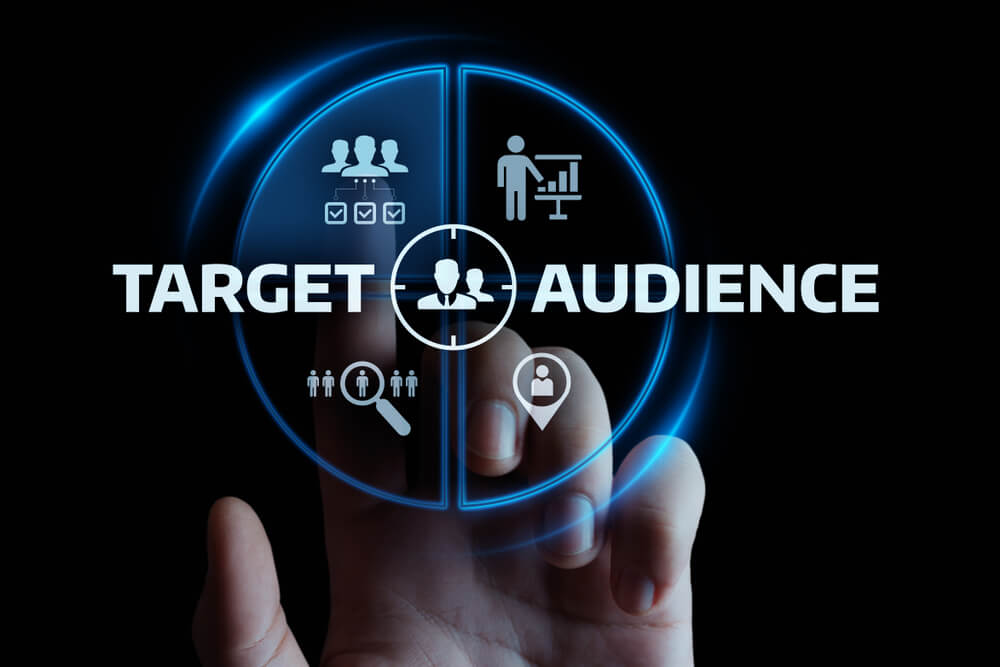
Identifying Your Target Audience: A SaaS Marketing Essential
Marketing success in software-as-a-service (SaaS) requires targeting the right audience. By understanding audience pain points, preferences, and behaviors, SaaS companies can tailor their offerings and communications. This targeted approach improves resource allocation, engagement, conversion, and customer loyalty, increasing ROI and sustainable growth.
This guide covers several key topics:
 Identifying your SaaS target audience involves a strategic process integrating market research, customer data analysis, and competitor evaluation. An expert SaaS marketing agency follows this step-by-step guide:
Identifying your SaaS target audience involves a strategic process integrating market research, customer data analysis, and competitor evaluation. An expert SaaS marketing agency follows this step-by-step guide:
 Market segmentation allows for tailored and personalized marketing strategies. SaaS companies can deliver targeted messages and solutions by dividing the diverse user base into segments based on characteristics such as industry vertical, company size, usage behavior, or specific needs.
This level of customization enhances relevance, allows personalized connection with the audience, and increases conversion, driving user satisfaction and loyalty. Segmenting a target audience and customizing marketing efforts for each segment requires the following strategies:
Market segmentation allows for tailored and personalized marketing strategies. SaaS companies can deliver targeted messages and solutions by dividing the diverse user base into segments based on characteristics such as industry vertical, company size, usage behavior, or specific needs.
This level of customization enhances relevance, allows personalized connection with the audience, and increases conversion, driving user satisfaction and loyalty. Segmenting a target audience and customizing marketing efforts for each segment requires the following strategies:
 Staying adaptable and responsive to changes in audience preferences and behaviors helps SaaS businesses remain competitive and relevant. By staying adaptable, SaaS companies can address emerging needs, pivot strategies, and innovate their offerings, ensuring they remain aligned with evolving audience preferences. They can sustain customer satisfaction and foster long-term relationships.
The following best practices can help:
Staying adaptable and responsive to changes in audience preferences and behaviors helps SaaS businesses remain competitive and relevant. By staying adaptable, SaaS companies can address emerging needs, pivot strategies, and innovate their offerings, ensuring they remain aligned with evolving audience preferences. They can sustain customer satisfaction and foster long-term relationships.
The following best practices can help:
- Benefits of target audience identification
- Steps in identifying SaaS target audience
- Creating buyer personas for SaaS
- Segmenting the audience for personalized marketing
- Using data for audience insights
- Adapting to audience changes and trends
Want to know how we help SaaS businesses stand out from the crowd? Watch this video to learn how DAP makes it happen!
Benefits of Target Audience Identification
Accurately identifying the target audience has multifaceted benefits for SaaS companies. It significantly enhances product development by providing insights into user needs and pain points, allowing businesses to tailor their solutions to address these concerns. It facilitates the creation of effective messaging strategies that resonate with the specific language, values, and interests of the identified audience segments. This leads to more robust connections and engagement. Meticulous targeting elevates brand messaging and contributes to higher conversion rates as tailored communication and offerings compel prospects to convert into paying customers. Here are real-life examples of SaaS companies that have succeeded by focusing on a specific audience.1. Slack
Slack revolutionized workplace communication by targeting teams and businesses with its messaging platform designed for collaboration. Its focus on improving team productivity and communication led to widespread adoption among companies of various sizes, cementing its position as a leading communication tool in the corporate world.2. Shopify
Shopify concentrated on empowering small and medium-sized businesses to create their own online stores. By providing an easy-to-use platform tailored to the needs of entrepreneurs, Shopify captured a niche market and became a go-to solution for Ecommerce businesses, offering tools for website building, inventory management, and sales channels.3. HubSpot
HubSpot has succeeded by targeting marketers with its all-in-one marketing, sales, and CRM platform. By catering to the needs of marketing professionals and offering inbound marketing solutions, HubSpot attracted businesses looking for comprehensive tools to manage customer relationships and drive inbound leads.4. Zenefits
Zenefits focused on providing HR solutions specifically for small and medium-sized businesses. Its cloud-based software streamlined HR processes, such as payroll, benefits administration, and compliance, catering to the needs of growing companies without robust HR departments.5. DocuSign
DocuSign targeted businesses seeking a secure and efficient way to manage electronic agreements and signatures. By addressing the pain points of traditional paperwork processes, DocuSign became a leader in electronic signature technology, catering primarily to legal, real estate, and finance professionals. These companies succeeded by recognizing their specific target audience’s unique needs and tailoring their SaaS solutions to address them.Steps in Identifying Your SaaS Target Audience
 Identifying your SaaS target audience involves a strategic process integrating market research, customer data analysis, and competitor evaluation. An expert SaaS marketing agency follows this step-by-step guide:
Identifying your SaaS target audience involves a strategic process integrating market research, customer data analysis, and competitor evaluation. An expert SaaS marketing agency follows this step-by-step guide:
- Define your offering and value proposition. Clearly define the SaaS product or service and its unique value proposition. Understand what problems it solves and what benefits it offers to potential users.
- Conduct market research. Identify potential customer segments by analyzing the broader market landscape, industry trends, and possible niches where the solution can fit.
- Analyze current customer data. Look for patterns among current users to identify demographics, behaviors, pain points, and preferences. Use this data to create customer personas representing the ideal target audience segments.
- Identify pain points and needs. This understanding guides marketers in targeting audiences most likely to benefit from and resonate with the SaaS product.
- Competitor analysis. Analyze the competitors’ customer base and marketing strategies. Identify their target audience, messaging strategies, and unique selling propositions. This analysis can differentiate the offering and refine targeting strategies.
- Create customer personas. Develop detailed customer personas based on the data gathered from market research and customer analysis. More on this later.
- Refine and validate. Refine your target audience based on the insights gained from market research, customer data analysis, and competitor evaluation. Validate assumptions by seeking feedback from current customers, conducting surveys, or running focus groups to ensure alignment with the identified personas.
- Test and iterate. Implement targeted marketing campaigns to reach the identified audience segments. Monitor and track the results closely, gathering feedback and data. Use this information to continually iterate and optimize strategies.
Creating Buyer Personas for SaaS
Buyer personas humanize the target audience and provide a clear understanding of potential customers. In the SaaS industry, where solutions cater to diverse needs, personas form critical demographic, behavioral, and psychographic traits of ideal customers. Personas help marketers comprehend distinct user groups’ pain points, goals, preferences, and decision-making processes, guiding tailored marketing strategies and product development. A SaaS marketing agency can effectively address specific customer needs, enhance user experiences, and drive higher engagement and conversions by aligning messaging, features, and functionalities with these personas. These strategies can help create detailed buyer personas based on audience research for SaaS products:- Engage with existing customers and prospects through interviews and surveys. Ask open-ended questions to understand their challenges, goals, preferences, and decision-making processes related to your SaaS offering. Gather qualitative data to uncover insights that can shape detailed personas.
- Use analytics tools and CRM data to track user behavior, interactions, and engagement with the SaaS platform. Identify common behavioral patterns, such as feature usage, login frequency, areas of interest, and any roadblocks encountered.
- Monitor discussions, comments, and interactions related to your industry or product on social media platforms and online communities. Engage in conversations, observe the language used, and take note of recurring themes or challenges discussed by the target audience.
- Explore demographics, industry verticals, company sizes, and geographical locations relevant to the SaaS solution. Use this to segment the audience into distinct groups and craft personas representing each segment’s needs.
- Collaborate with sales, customer support, product development, and other relevant departments within the organization. Gather insights and perspectives from various teams that interact directly with customers. Validate persona assumptions with their experiences, feedback, and observations.
Segmenting the Audience for Personalized Marketing
 Market segmentation allows for tailored and personalized marketing strategies. SaaS companies can deliver targeted messages and solutions by dividing the diverse user base into segments based on characteristics such as industry vertical, company size, usage behavior, or specific needs.
This level of customization enhances relevance, allows personalized connection with the audience, and increases conversion, driving user satisfaction and loyalty. Segmenting a target audience and customizing marketing efforts for each segment requires the following strategies:
Market segmentation allows for tailored and personalized marketing strategies. SaaS companies can deliver targeted messages and solutions by dividing the diverse user base into segments based on characteristics such as industry vertical, company size, usage behavior, or specific needs.
This level of customization enhances relevance, allows personalized connection with the audience, and increases conversion, driving user satisfaction and loyalty. Segmenting a target audience and customizing marketing efforts for each segment requires the following strategies:
1. Demographic Segmentation
Divide the audience based on demographic factors such as age, gender, income, job title, company size, or location. For instance, a SaaS company offering project management tools might tailor messaging for freelancers, small businesses, and enterprise-level corporations based on their distinct needs and organizational structures.2. Behavioral Segmentation
Analyze user behavior within your SaaS platform to segment audiences by their interactions, usage patterns, feature adoption, and engagement levels. Tailor marketing messages and product suggestions to encourage further usage or address specific pain points identified through behavioral data.3. Psychographic Segmentation
Consider psychographic factors such as values, attitudes, interests, lifestyles, and pain points. For instance, a CRM software provider might segment their audience based on differing pain points related to sales pipeline management, nurturing customer relationships, lead generation strategies, catering messaging, and features.4. Industry or Vertical Segmentation
Divide the audience by industry or verticals they operate in. SaaS companies can create industry-specific content, case studies, or solutions that directly address the unique challenges and compliance requirements of particular sectors, such as healthcare, education, finance, or Ecommerce.5. Lifecycle or Journey Stage Segmentation
Segment users based on their stage in the customer journey or product adoption lifecycle. Tailor marketing efforts differently for prospects in the awareness stage, those considering upgrades or additional features, and long-term users seeking advanced functionalities or customer support. Provide relevant content and incentives to guide them through their journey. With these segmentation strategies, SaaS companies can create targeted marketing campaigns, personalized communication, and product features that resonate with different audience segments.Using Data for Audience Insights
Using data to create audience insights is critical for identifying the target audience, as it provides empirical evidence and accurate information about user behaviors, preferences, and interactions with a SaaS product. Data-driven insights enable precise segmentation, helping identify specific groups within a broader audience and leading to tailored messaging and solutions. By leveraging data, SaaS companies can make informed decisions, refine their strategies, and optimize their offerings to better meet the needs of their target audience. This eventually increases engagement and conversions. Using these strategies, leverage data analytics to gain deeper insights into the target audience:- Use data analytics tools to track and analyze user behavior within the SaaS platform. This includes studying usage patterns, feature adoption rates, session durations, click-through rates, and drop-off points.
- Implement data-driven segmentation strategies to categorize users into distinct groups based on behavior, demographics, or usage characteristics.
- Analyze the customer journey by mapping users’ various touchpoints and interactions with the SaaS product. Data analytics can uncover key moments, challenges, or decision-making stages throughout the journey.
- Use predictive analytics to forecast future trends, user behaviors, or potential churn. By analyzing historical data, predictive models can anticipate user actions, allowing SaaS companies to proactively adjust strategies or create targeted campaigns to retain customers.
- Utilize sentiment analysis and feedback mining techniques on customer reviews, support tickets, or social media mentions.
Adapting to Audience Changes and Trends
 Staying adaptable and responsive to changes in audience preferences and behaviors helps SaaS businesses remain competitive and relevant. By staying adaptable, SaaS companies can address emerging needs, pivot strategies, and innovate their offerings, ensuring they remain aligned with evolving audience preferences. They can sustain customer satisfaction and foster long-term relationships.
The following best practices can help:
Staying adaptable and responsive to changes in audience preferences and behaviors helps SaaS businesses remain competitive and relevant. By staying adaptable, SaaS companies can address emerging needs, pivot strategies, and innovate their offerings, ensuring they remain aligned with evolving audience preferences. They can sustain customer satisfaction and foster long-term relationships.
The following best practices can help:
- Analyze and monitor user data, behaviors, and engagement metrics regularly using analytics tools.
- Gather insights about evolving needs, pain points, and expectations to adapt marketing strategies and refine the SaaS product.
- Keep a close eye on industry trends, technological advancements, and competitive landscape changes.
- Monitor competitors’ strategies, product updates, and audience targeting approaches to identify emerging patterns and adapt your strategy to them.
- Implement agile marketing methodologies that allow for flexibility and quick adaptation to changes.
- Test new ideas, campaigns, or features in smaller iterations, gather feedback, and adjust strategies based on real-time data and insights.
- Encourage collaboration between marketing, sales, product development, and customer support teams.
Summing Up
Identifying the target audience in SaaS marketing is critical for developing tailored strategies in a competitive industry. Understanding the audience’s specific needs, preferences, and behaviors allows SaaS companies to craft personalized solutions and messaging. Precise audience identification optimizes resource allocation and drives higher engagement, conversions, and customer retention. What steps can you take to ensure your marketing strategies align with your audience’s evolving needs? Let an expert SaaS marketing agency help you create effective campaigns. Contact Digital Authority Partners for the latest in SaaS marketing tactics today.Want To Meet Our Expert Team?
Book a meeting directly here



